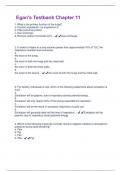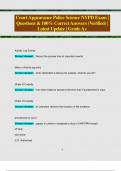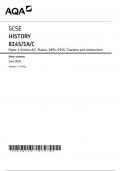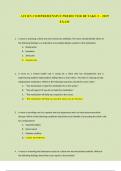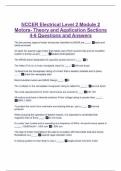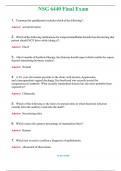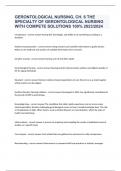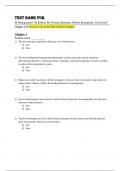Exam (elaborations)
Egan's Testbank Chapter 11 Questions and Answers well Explained Latest 2024/2025 Update 100% Correct.
- Course
- Institution
1. What is the primary function of the lungs? a. Convert angiotensin I to angiotensin II. b. Filter pulmonary blood. c. Gas exchange. d. Remove carbon monoxide (CO). - ️️Gas exchange. 2. In order to inspire to a lung volume greater than approximately 70% of TLC, the inspiratory muscles mu...
[Show more]
